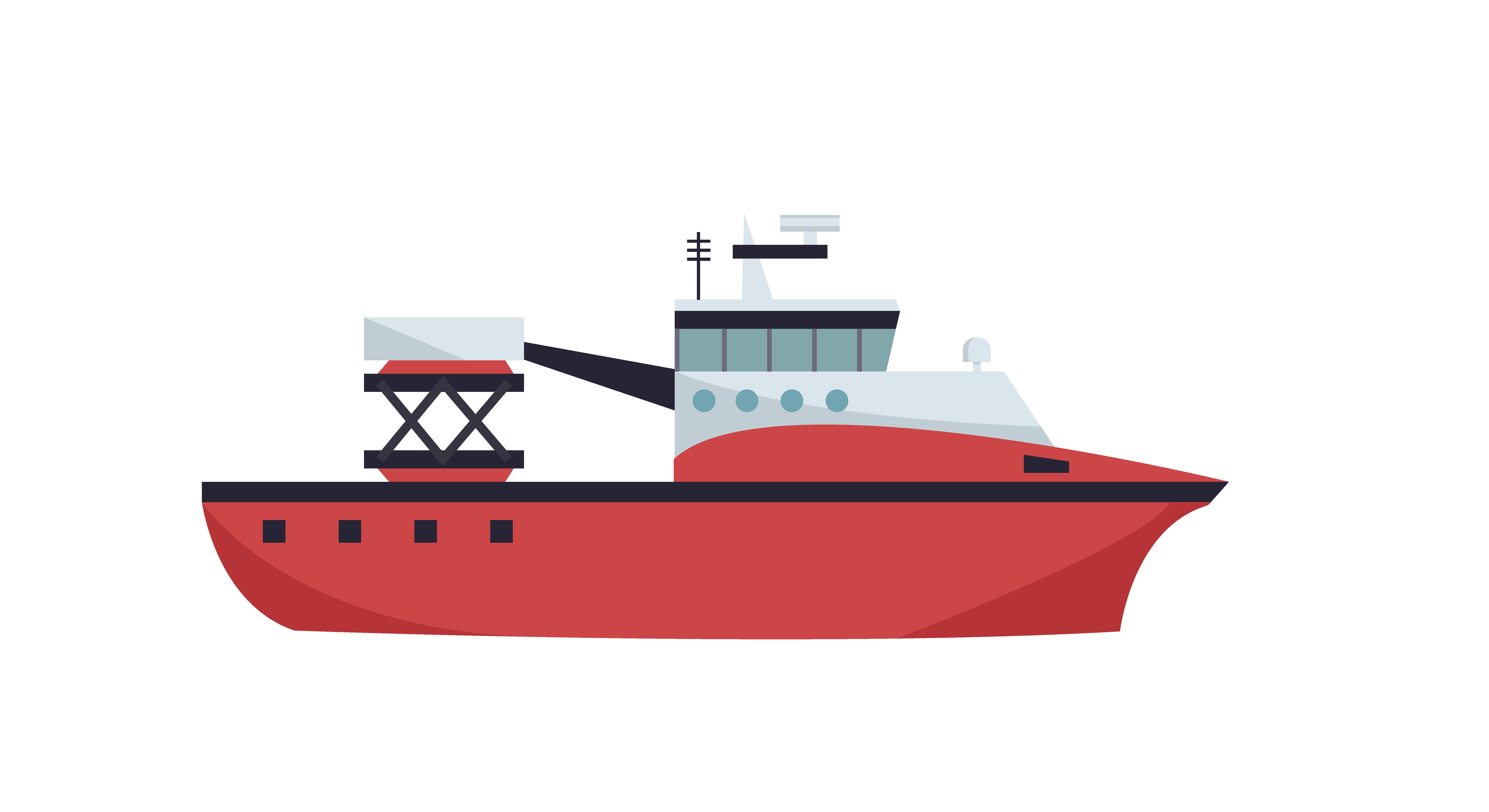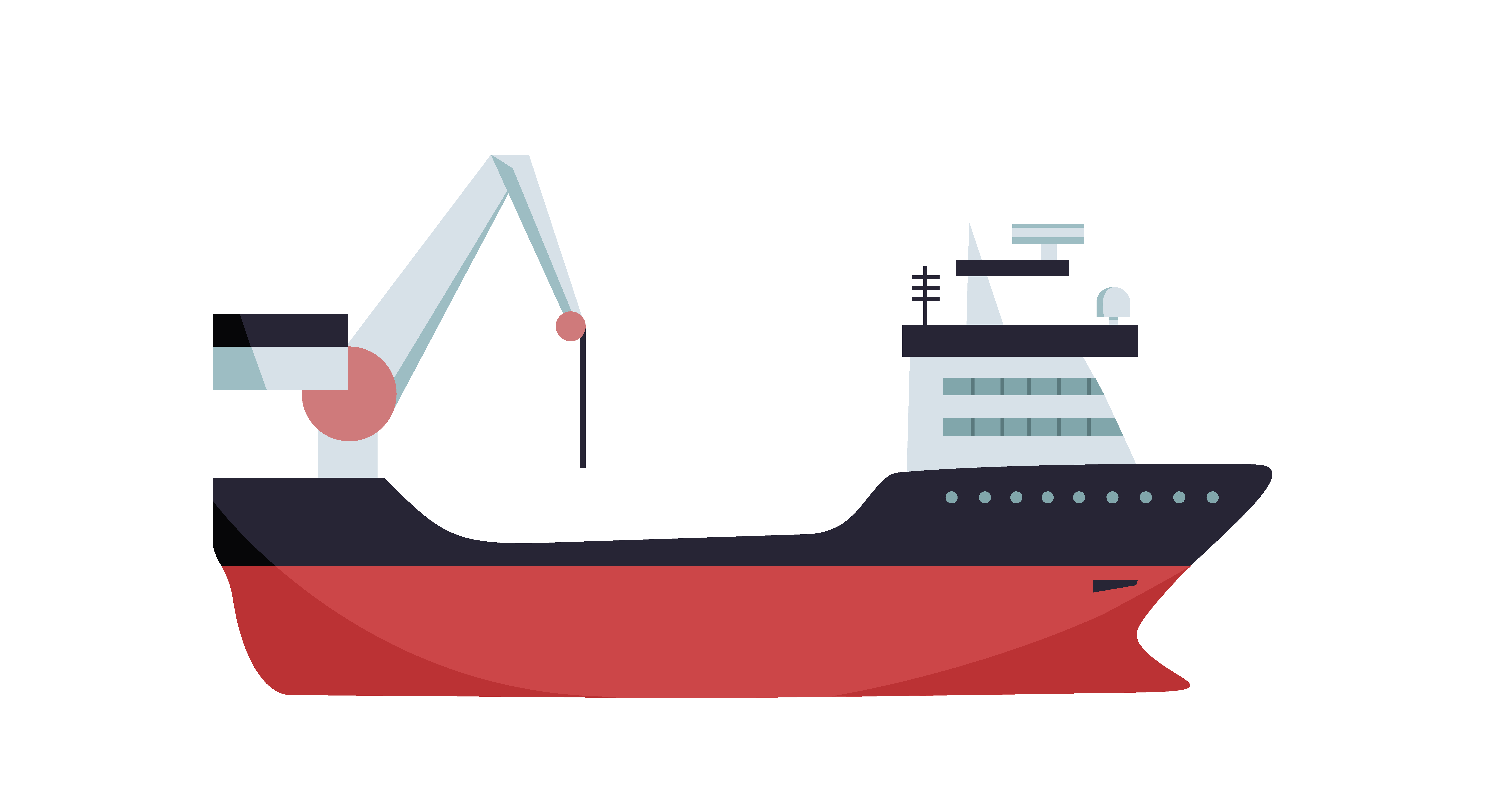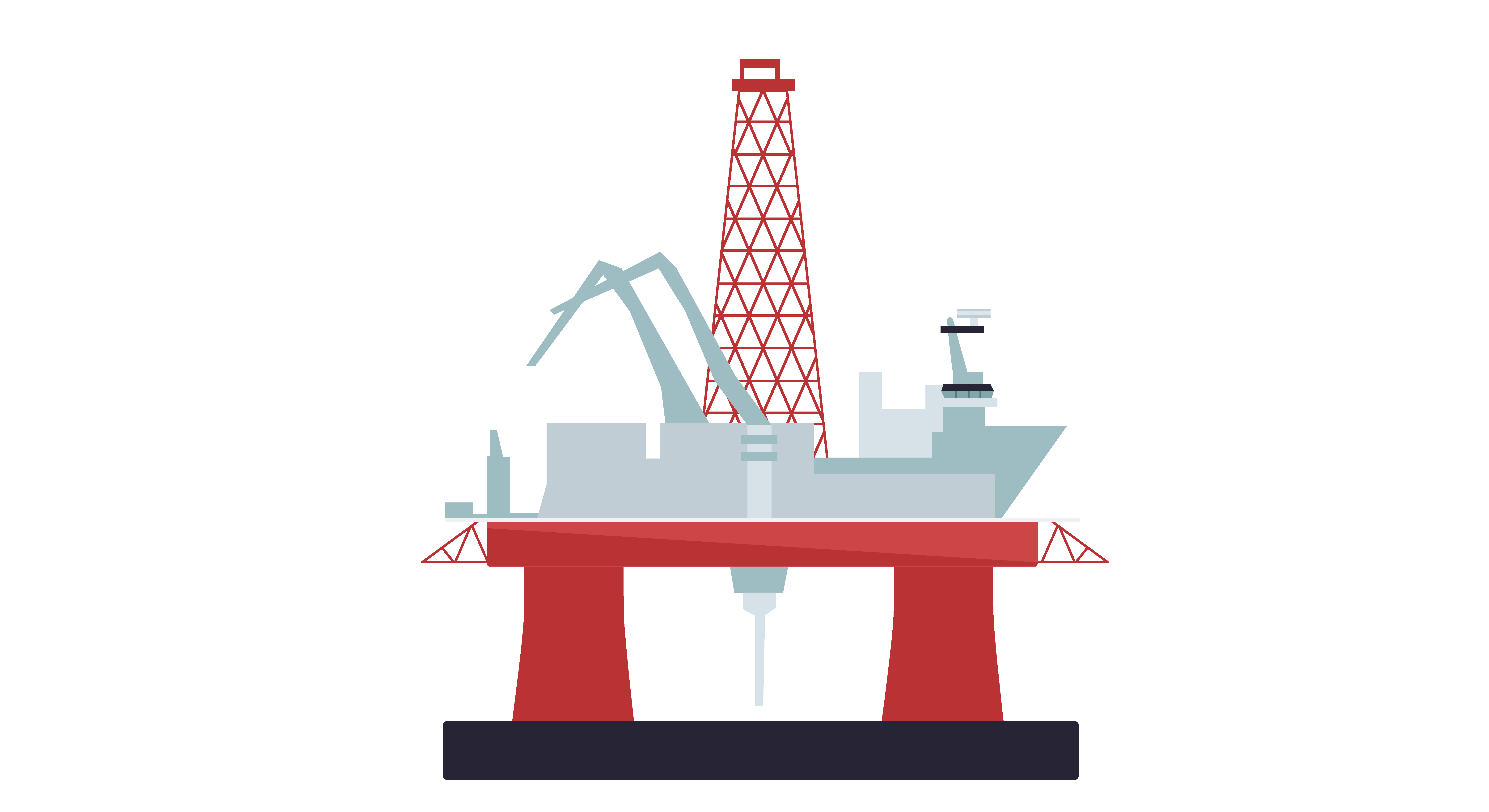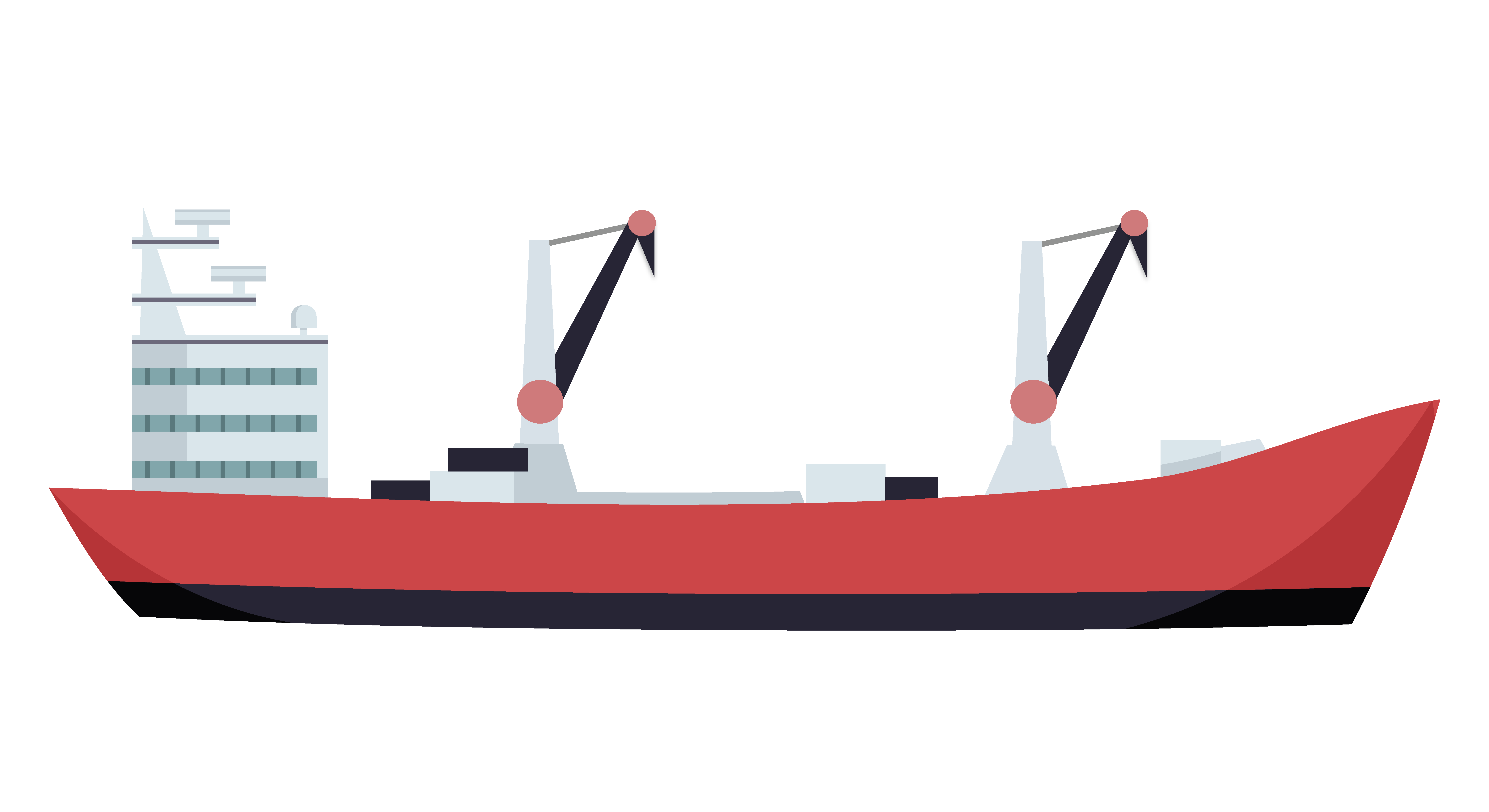How Does It Work?
Next Ocean’s WaveAnalyzer and WavePredictor use radar technology to observe the surrounding ocean waves. The advanced algorithms in Next Ocean’s software can turn any X-band radar (including an ordinary navigation radar) into a powerful remote wave sensor by analysing the modulation of the received electro-magnetic signal by the sea waves.

Using established technology, the WaveAnalyser translates this information into a directional wave spectrum. In addition, the novel and unique WavePredictor propagates the observed waves into the future resulting in a near future prediction of the waves arriving at the ship and the resulting ship motions.
- Scanning the sea surface aroung the ship
- Using conventional X Band pulse radar
Sea Clutter
At the bridge of sea going ships, clean radar images clearly revealing other reflecting objects such as ships and coastlines are usually shown on the radar monitors. These images are obtained by filtering the raw radar signal thus removing the noise. This noise, which is captured by acquiring the raw radar data (before any filtering), partly comes from reflections from the sea surface: The electro- magnetic radar waves resonate with the wind induced ripples on the sea (so-called Bragg scattering), resulting in a sufficiently strong reflection to reveal the underlying surface waves that we want to detect and predict. The need for the surface roughness provided by the wind ripples explains why the system needs sufficient wind (> 3 Bft).
360 Degrees View
Waves can come from a possibly wide range of directions simultaneously, especially in confused seas with one or more swell systems combined with local generated wind waves. An important advantage of using a rotating radar antenna is that it provides a full 360 degrees view and therefor is capable of predicting waves appoaching from any direction.

Standard Commercial off the Shelf Hardware
For all projects on our track record, standard marine navigation radar systems without any modifications have been used. These are horizontally (HH) polarized antennas to comply with IMO regulations for navigation radar. Although these standard systems have proven to give excellent results, vertically (VV) polarized radar antenna's are known for its superior wave detection capabilities with improved accuracy at especially lighter wind/wave conditions. Next Ocean's Wave Analyzer and WavePredictor therefore optionally come with a dedicated vertically polarized antenna.
Standard marine radar is non-coherent. This means that it does not enable Doppler phase analysis between transmitted and received radar signal. With the use of Next Ocean's advanced algorithms, the pros of coherent radar do not outweigh its cons among which drastically increased hardware costs. Independent research ( "Consistency between Sea Surface Reconstructions from Nautical X-band Radar Doppler and Amplitude Measurement, Stole-Hentschel et al." ) confirmed that both the Doppler signal (from coherent radar) and the backscatter intensity signal (from non-coherent radar) are suitable for sea surface inversion and give almost identical surface elevations.
Applications
There are many different examples of critical, short lasting operations that can be performed in marginal weather conditions. Click on the ship types below to learn more on how to apply the WavePredictor in the field.
SOV, AHT, PSV & W2W
Avoid crossing the gangway during residual motions in the gangway
Timely predict automated gangway disconnections
Avoid landing or picking up loads with residual motions in the motion compensated crane or during large vessel motion amplitudes
Monitor groups of incomming high waves that are likely to push vessel out of desired DP enveloppe
What's The Technology Impact?
To quote Jan Hoegee, the jury chairman for the 2017 OEEC Innovation Award: "The problem of anticipating on severe wave conditions impacting operations at sea is a paramount one. Next Ocean's innovation includes analytics to come up with huge cost savings, improving safety of operations and realizing better use of assets at sea. It is a nice tool and ‘easy to understand’."
Critical Phase
The expert jury of the 2017 OEEC was pretty clear about Next Ocean's innovative Ship Motion Prediction technology. But how does this technology actually make such an impact? And how big actually is the impact of this technology? Read further to learn more.
There is always one most critical phase in any offshore operation. This could be e.g. the initial load transfer in a heavy lift operation, the lowering of delicate equipment like ROVs through the splash zone or a moonpool, or the crossing of technicians over a motion compensated W2W gangway.
Often these most critical moments tend not to take too long. A gangway crossing takes roughly 30 seconds and even the heaviest ROVs are lowered through the splash zone within minutes.
Next Ocean's WavePredictor can foresee the most suitable moments for these most critical phases in your offshore operations up to minutes ahead of time. Read further down below to learn more on how this completely changes the way to look at operational limits.

A Paradigm Change in Operational Limits
When using the WavePredictor during the most critial part of your offshore operations, things change. There is no need anymore to rely solely on statistic to judge a situation workable or not.
Conventional Approach: Statistics
The conventional appraoch is to determine limiting wave conditions for these kind of operations. These limits are based on statistics. Only when the chances of a limit crossing event are sufficiently low, performing the critical step is allowed. This can only be achieved by applying significant safety factors. To make things worse, the chance of encountering this limit crossing wave during your critical operation is still there...
Next Ocean Approach: Deterministic
The WavePredictor will simply determine the exact moments in time where the upcoming motions are below limits. The only remaining question is: how often do these safe windows occur?

Well the answer is: pretty often! When operating exactly at the conventional operational limits these safe windows make up well over 99% of the time.
Have a look at the following graph. This graph shows roughly 15 minutes of measured have motion. This is real data. The green and red colors of the graph show the moments indicated by our WavePredictor as 'large heave amplitudes likely to occur': red, and 'large heave amplitudes unlikely to occur': green. All predicted 120 seconds in advance.

We see that the WavePredictor correctly picked out the large amplitude heave events, all of them are correctly warned for. We also see that there still remain quite some 'windows of opportunity', the green sections.
Operational Impact
Recent studies using our growing dataset that is accumulating with every project we are involved have shown that the limits based on significant wave height (Hs) can be increased by roughly 15-20%, without reducing operational safety.
Example Use Case: W2W
Let us take a W2W vessel operating at the North Sea as an example. Our example vessel has the following operational limits:
- Hs limit = 3.0m
- Critical wave = 5.6m
- Critical window = 120s
Based on recent studies we can increase the limits based on significant wave height (Hs) by roughly 15-20%, without reducing operational safety. For our example W2W vessel this means she can perform operations safely up till 3.6m Hs.
In this sea state, with a significant wave height of 3.6m, still 95% of the time consists of windows of at least the length of the critical window of 120s that are completely free of waves that match or surpass the critical wave height of 5.6m.
29 Additional Operational Days
When applying this knowledge to our example use case with the W2W vessel operating at the North Sea, the gain of this increased operational limit over 1 year is 8% of the total time. This equals 29 extra operational days per year on average!







